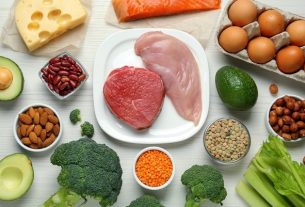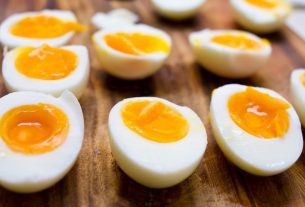Prebiotics are substances present in some foods, which serve as a substrate for certain microorganisms present in the intestine, favoring the multiplication of bacteria beneficial to digestion and health.
Some of the benefits of prebiotics are improving the immune system, increasing mineral absorption and maintaining intestinal integrity, preventing the growth of pathogenic bacteria that cause diseases.
Functional prebiotics are fructooligosaccharides (FOS), galactooligosaccharides (GOS) and other oligosaccharides, inulin and lactulose, which can be found in foods such as wheat, onions, bananas, honey, garlic, chicory root or burdock, for example.

What are worth for
Prebiotics serve to:
- Increase bifidobacteria in the colon;
- Increase the absorption of calcium, iron, phosphorus and magnesium;
- Increase the volume of feces and the frequency of bowel movements;
- Decrease the duration of intestinal transit;
- Regulate blood sugar;
- Increase satiety;
- Reduce the risk of developing colon and rectal cancer;
- Decrease the severity of inflammatory bowel disease, such as ulcerative colitis;
- Reduce cholesterol and triglyceride levels in the blood.
Furthermore, these substances also contribute to strengthening the immune system and the formation of the newborn’s microbiota, helping to reduce diarrhea and allergies.
How they work
Prebiotics are food components that are not digested by the body, but are beneficial for health, because they selectively stimulate the multiplication and activity of bacteria that are good for the intestine. Furthermore, studies prove that prebiotics also contribute to controlling the multiplication of pathogens in the intestine.
As these substances are not absorbed, they pass into the large intestine, where they provide substrate for intestinal bacteria. Soluble fibers are normally fermented quickly by these bacteria, while insoluble fibers are fermented more slowly.
Generally, these substances act most frequently in the large intestine, although they can also interfere with microorganisms in the small intestine.
Foods with prebiotics
Foods with prebiotics are:
- Wheat, barley, rye and oats;
- Banana, green banana biomass, apple, currant and blackberries;
- Onion, asparagus, garlic and leek;
- Chicory root and dandelion leaves;
- Mel.
The currently identified prebiotics are non-digestible carbohydrates, including lactulose, inulin and oligosaccharides, resistant starch, pectin and beta-glucans.
Furthermore, prebiotics can also be ingested through dietary supplements, which are generally associated with probiotics, as is the case with Simbiotil and Atillus, for example.
What is the difference between prebiotic, probiotic and synbiotic?
While prebiotics are the fibers that serve as food for bacteria and that favor their survival and proliferation in the intestine, probiotics are those good bacteria that live in the intestine. Find out more about probiotics, what they are for and what foods they are present in.
A synbiotic is a food or supplement in which a probiotic and a prebiotic are combined.
Bibliography
- BROTHERS, J; VAN DEN BROUCKE, S et al. Determinants of prebiotic vegetable consumption: the extended theory of planned behaviour. Archives of Public Health. Vol.78. 1-9, 2020
- G. Olveira Fuster and I. González-Molero. Eva Gimeno Creusa. Clinical nutrition. 2007
- ULRICH Belmmo; MOUMITA Sahoo et al. Honey, Probiotics and Prebiotics: Review. Research Journal of Pharmaceutical, Biological and Chemical Sciences. 7. 5; 2428-2438, 2016
- FERREIRA, Célia LL. Prebiotics and probiotics – Update and prospecting. 2. Brazil: Rubio, 2018.
- WORLD GASTROENTEROLOGY ORGANIZATION WORLD GUIDELINES. Probiotics and prebiotics . 2011. Available at: <https://www.worldgastroenterology.org/UserFiles/file/guidelines/probiotics-portuguese-2011.pdf>. Accessed on October 28, 2019
- PROMISE, Susana Marta Isay. Probiotics and prebiotics: the state of the art. Brazilian Journal of Pharmaceutical Sciences. 42. 1; 2006
- COUTO, Cinthia de Carvalho. Prebiotic Foods – Use and availability on the market. Available at: <http://www.unirio.br/ccbs/nutricao/ppgan_pt/alimentacao-e-saude/palestras/2015/alimentos-prebioticos-uso-e-disponabilidade-no-mercado>.

Sign up for our newsletter and stay up to date with exclusive news
that can transform your routine!
Warning: Undefined array key "title" in /home/storelat/public_html/wp-content/plugins/link-whisper-premium/templates/frontend/related-posts.php on line 12
Warning: Undefined array key "title_tag" in /home/storelat/public_html/wp-content/plugins/link-whisper-premium/templates/frontend/related-posts.php on line 13





